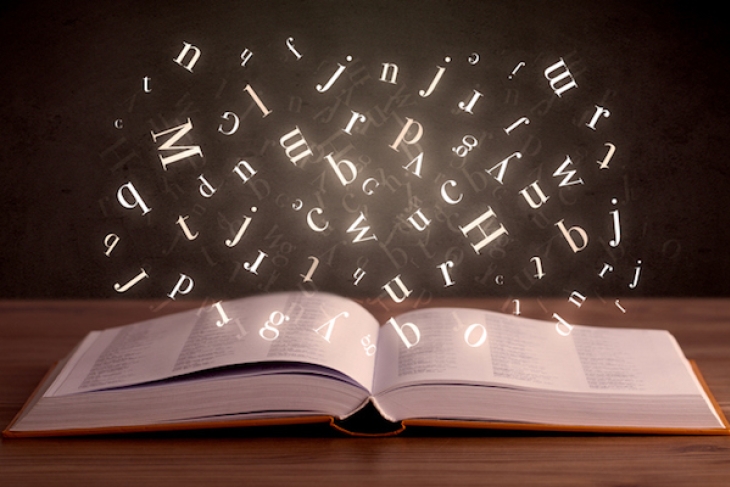Recently I contributed a piece to Education Week, “Why Doesn't Every Teacher Know the Research on Reading Instruction?” My intention was to support and even broaden the important national conversation about reading instruction that was spawned by Emily Hanford’s “Hard Words” documentary. This conversation has continued to have a great deal of fuel, as local papers have begun writing about shortcomings in reading instruction and Hanford brought the conversation to the editorial page of the New York Times.
In my piece, I called attention to two other areas of reading research that deserve attention: the importance of content knowledge to reading comprehension and the importance of getting all kids to read texts on their grade level. I asserted that we are in the midst of a renaissance in the curriculum space that could have a profound impact on the results being experienced in classrooms.
In response to the many inquiries we’ve received about this claim, I have expanded my piece to name the names of K–8 English language arts (ELA) curriculums that characterize the renaissance. They are a different breed of materials, not only because of their research-base and strong standards-alignment. Each has received high marks in reviews by the independent EdReports and Louisiana Believes educator review processes. Three of the four utilize trade books purchased separately. Half are available as Open Educational Resources. All are developed by smaller organizations, including some nonprofits, that can’t begin to compete with the marketing budgets of the Big Three publishers. The curriculum renaissance represents a transition, with important policy considerations that we invite education advocates to consider (e.g., how can our state curriculum adoption processes become more open and responsive to newer, smaller entrants?)
When it comes to the essential work of improving reading outcomes, I feel great urgency. We can’t share this information broadly enough. (I would skywrite it above elementary schools if I could!) Thank you for taking the time to read and share this piece, including the newly-added paragraph that names names in italics.
***
Almost two decades ago, the National Reading Panel reviewed more than 100,000 studies and arrived at recommendations for how students should receive daily, explicit, systematic phonics instruction in the early grades. Why is this literacy research not more widely known? Why is the fact that reading skills need to be taught, and that there is a well-documented way to do it, not something highlighted in many teacher-preparation programs (or parenting books, for that matter)?
Recently, a remarkable audio-documentary by Emily Hanford went viral, shining a spotlight on such crucial literacy research—none of which is new, but much of which is unknown to today’s teachers. Like many in the literacy community, I worry about our failure to bring research into classroom practice. My concern is greatest for teachers who are being sent into classrooms without the tools they need to succeed. I’m hopeful this renewed interest will serve as a catalyst for overhauling reading instruction in our teacher-preparation programs. However, relying solely on better preparation for the next generation of teachers is a slow delivery system to children. The stakes are too high. We need more immediate solutions.
Only roughly one-third of our nation’s fourth and eighth graders can demonstrate proficiency on national tests, with students from low-income families and students of color faring the worst. When students can’t read, they have trouble learning; the great majority of students who fail to master reading by third grade either drop out or finish high school with dismal lifetime earning potentials.
I’d like to build on the momentum Hanford’s piece has sparked to call attention to additional research-based practices that go hand-in-hand with the importance of phonics. As educators experience “aha” moments about the need for stronger phonics instruction, let’s talk about some other literacy practices that need fixing in elementary classrooms. Here’s my short list of practices and resources to add to the conversation:
1. Let all kids read the good stuff
The pervasive practice of putting kids into reading groups according to their “just right” reading level has meant that large numbers of students receive a steady diet of below-grade-level instruction. The texts they’re reading don’t require them to decipher unfamiliar vocabulary, confront challenging concepts, or parse new and complicated language. Noted literacy researcher Timothy Shanahan has written extensively about why this is the wrong approach, documenting that “after seventy years there still isn’t any research supporting the idea of matching kids to just-right texts” after first grade—yet still the practice persists. This despite research showing that the ability to handle complex text is the distinguishing characteristic between students who go on to do well in college and work and those who don’t.
Why would we deprive our youngsters of the opportunity to build this muscle in elementary school, when all that’s standing in the way of their doing so is the opportunity and the support that close reading can provide?
The Council of Chief State School Officers offers a host of resources to help teachers guide students with complex texts.
2. Build students’ general content knowledge
Some of the most profoundly important, yet under-recognized, reading research shows that students’ reading comprehension depends heavily on their background knowledge about the world—knowledge that comes largely from learning about science and social studies topics. When students know something about a topic, they are better able to read a text in which that topic is discussed, even when the sentence structure is complex or the words are unfamiliar. Cognitive science expert Daniel Willingham explains this principle clearly, and the Knowledge Matters Campaign expands on it further.
The implications for literacy instruction are enormous because young children are receiving less time with science and social studies content in their school day. According to a 2007 study, instructional time spent on these subjects dropped by an hour and a half per week since the 1990s. The diminished attention to these knowledge-building topics creates less fertile ground for reading comprehension to flourish and is a significant culprit in our stagnant national reading outcomes. Given that time is a scarce commodity in most schools, the takeaway for school leaders is to incorporate rich content, organized around conceptually-related topics, into the reading curriculum so that students learn new information about the world while they develop as readers. Student Achievement Partners has ready-made resources that teachers can pull into their classrooms.
3. Let quality English language arts curriculums do some of the heavy-lifting
Poor-quality curriculum is at the root of reading problems in many schools. It is not an overstatement to say that a school that doesn’t have a phonics program is doing its students a huge disservice. Increasingly, the same can be said about the lack of intentionality for building students’ knowledge of the world and access to complex text. The current lack of educator know-how can be remedied by curriculum that points the way.
Fortunately, bolstered by emerging research about the “curriculum effect,” we’re in the midst of a curriculum renaissance. In recent years, a number of respected organizations have developed curriculums that are tailor-built to both state standards and the latest research. Educator reviews conducted by organizations such as the nonprofit EdReports or Louisiana Believes can help schools easily identify the best curriculum for their context.
My colleagues and I have studied the K–8 ELA curriculums that earn “all-green” reviews on EdReports. They are strong in all of the key accelerators of literacy: developing foundational skills (including a systematic phonics program); fostering knowledge acquisition by students; inclusive of high-quality, complex texts; and supportive of teachers in the important work of getting all kids reading texts on grade level. Products we regard highly include: EL Education K-5 Language Arts (developed by EL Education, provided by Open Up Resources); Core Knowledge Language Arts (developed by the Core Knowledge Foundation, provided by Amplify); ARC Core, developed and provided by the American Reading Company, and Wit & Wisdom, developed and provided by Great Minds.
No longer should classroom teachers need to scour the internet for materials. Instead, educators can spend their time focusing on how to become the best possible deliverers of thoughtfully arranged, comprehensive, sequential curriculums that embed standards, the science of reading, and the instructional shifts described above.
I have great empathy for teachers who have labored under the weight of misdirected teacher preparation, insufficient curriculums, ever-shifting educational fads, and ever-increasing professional demands—and welcome the attention of journalists who are shining a light on the opportunity represented by the convergence of science and a new class of high-quality curriculum materials. Based on my own experiences with educators taking this improvement journey, significant reading gains are possible with the right support. Our students’ reading future can be bright—if we seize the moment.
SUSAN PIMENTEL is a co-founder of StandardsWork, an education “do-tank” that focuses on promoting high-impact levers to improve student achievement, and a founding partner of Student Achievement Partners, dedicated to improving K–12 student achievement through evidence-based action. She was the lead author of the Common Core State Standards for English/language arts literacy.

